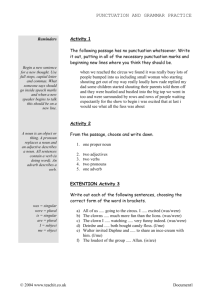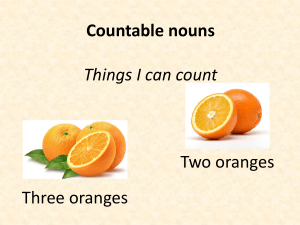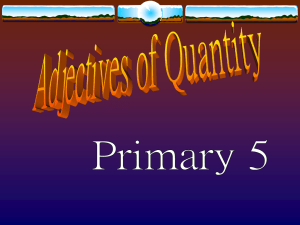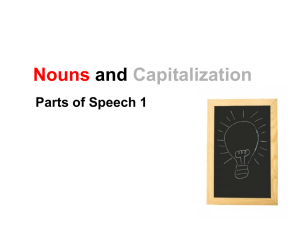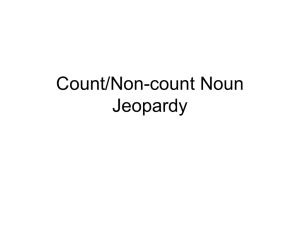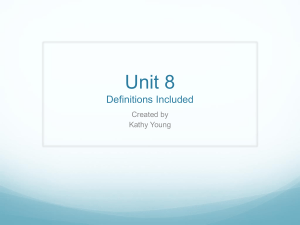Sentence templates
advertisement
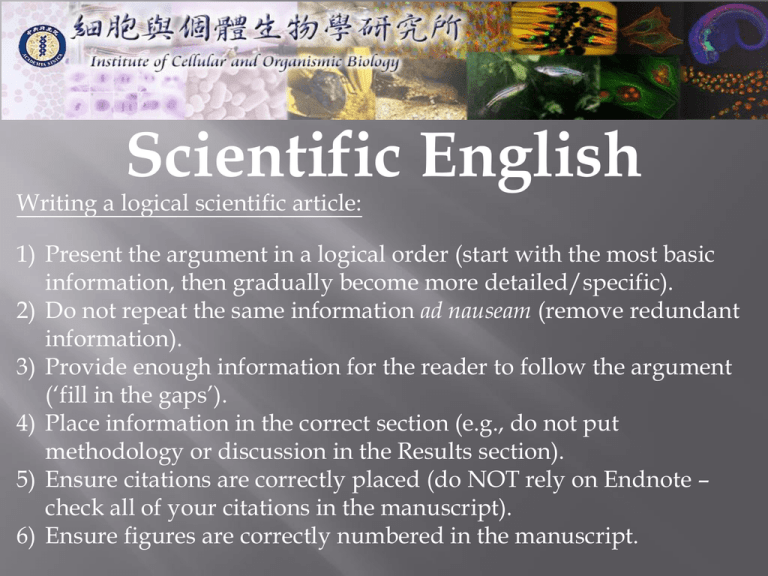
Scientific English Writing a logical scientific article: 1) Present the argument in a logical order (start with the most basic information, then gradually become more detailed/specific). 2) Do not repeat the same information ad nauseam (remove redundant information). 3) Provide enough information for the reader to follow the argument (‘fill in the gaps’). 4) Place information in the correct section (e.g., do not put methodology or discussion in the Results section). 5) Ensure citations are correctly placed (do NOT rely on Endnote – check all of your citations in the manuscript). 6) Ensure figures are correctly numbered in the manuscript. Paragraphs: Cover only one main point or idea in each paragraph. - One topic sentence (introduces the idea of the paragraph); - Supporting sentences (elaborate/explain/refute the topic sentence). Choosing a title for your paper: 1) Be concise. 2) Place key words at the front of the sentence. e.g., Effects of added calcium on salinity tolerance of tomatoes. → Calcium improves salinity tolerance of tomatoes. 4) Avoid non-standard abbreviations. 5) Avoid terms like ‘a study into’, ‘exploring’, ‘results’ and ‘investigation’. e.g., An investigation into the relationship between X and Y → X regulates Y. 6) Avoid subjective evaluations. e.g., an innovative method → a rapid method. 7) Avoid ambiguity. - often occurs when nouns are used as adjectives e.g., enzymatic activity suppression. This has two possible meanings: a) Suppression of enzymatic activity b) Suppression by enzymatic activity Writing Scientific Research Articles: Strategy and Steps. Margaret Cargill and Patrick O’Connor. Results section: Use the past tense. e.g., X inhibited Y. Use the present tense when referring to figures and tables. e.g., Figure 1 shows the dose-dependence of inhibition by X. Discussion: • Match the word with the strength of your data and argument. • Present tense is ‘stronger’ than past tense. • ‘Demonstrate’ and ‘indicate’ are strong. • ‘Appears’ and ‘suggests’ are weaker. • ‘May’ makes the sentence weaker still. Common mistakes In consistent with → consistent with or inconsistent with [‘inconsistent’ means ‘not consistent’]. A kindly (kind) gift. [‘kindly’ is an adverb; e.g., ‘she kindly gave me the vector. ‘Kind’ is an adjective; e.g., ‘the vector was a kind gift from her’.] No obviously difference → no obvious difference/not obviously different [‘obviously’ is an adverb, ‘obvious’ is an adjective.] Similar with → Similar to. Different to → Different from. Determinate = determine (determination). Recombinate = recombine (recombination). Imaginate = imagine (imagination). Interpretate = interpret (interpretation). (i) (ii) (iii) (iv) (i) (ii) (iii) GENERIC NOUN PHRASES: Any or all members of a class of living things, objects or concepts. Countable noun (plural): students, experiments, proteins. Countable noun (singular): a student, an experiment, a protein. Uncountable noun: Iron is required to transport oxygen in the blood. We measured soil pH. Countable noun (singular) – generic meaning with ‘the’ e.g. The fruit fly is among the most important model organisms. SPECIFIC NOUN PHRASES: Individual members of a class. Shared/assumed knowledge of one particular referent: the world, the ROC, the USA, the UK. Referring back to previously introduced concepts: PCR was performed using the primers in Table 1. The results revealed that expression of gene X was decreased. Pointing forward to information that specifies to what thing is being referred: We investigated the effect of drug X on blood pressure. Noun phrase Generic (any or all) Countable Singular ‘A’/’an’ Uncountable Specific ‘The’ Plural No article (plural) No article (singular) Adapted from Writing Scientific Research Articles: Strategy and Steps. Margaret Cargill and Patrick O’Connor. Sentence templates Delete all the specific information from a passage of writing. For example: ‘Translational control plays an important role in cell physiology, including cell growth, proliferation, differentiation, and metabolism.’ → ’ …plays an important role in…including…’ Record your sentence templates for later use with your own sub-field specific information. Molecular Cell. Volume 46, Issue 6, 29 June 2012, Pages 847–858
